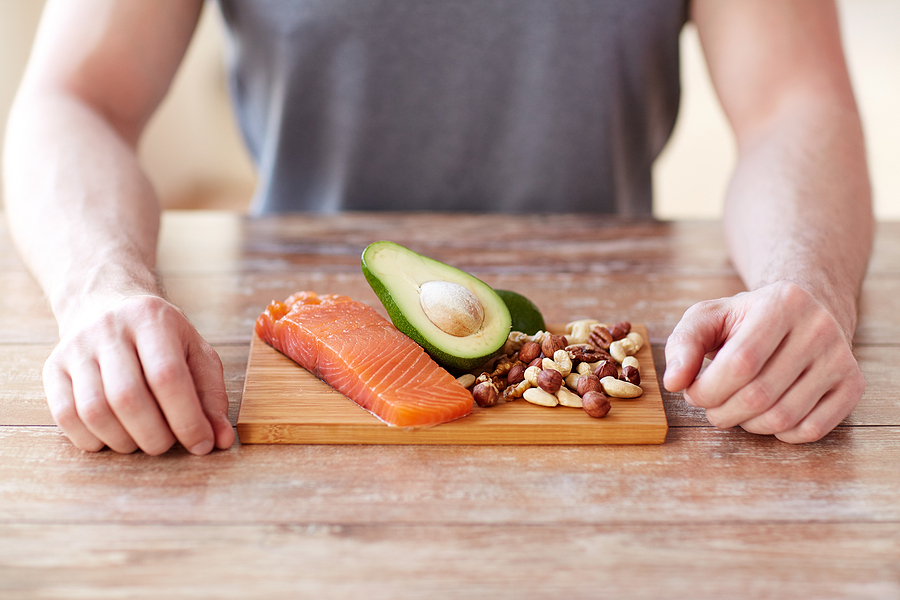Updated 8/20/2023
Lily’s face filled with confusion when I said “I’ve got just the diet for you to try.” She hadn’t come to see me about weight loss, but the word “diet” immediately made her assume I was telling her she needed to lose weight. The truth was, she was quite thin – so she really didn’t understand what I was saying. She’d come to see me due to chronic pain, aching, low energy, exhaustion, and uncomfortable GI symptoms she experienced due to an autoimmune condition.
I quickly reassured her that my use of the word “diet” had nothing to do with weight. I was talking about her overall patterns of eating, and the foods she put into her body. Diets for weight loss are a totally different subject.
Lily had been living with her autoimmune disease for quite some time and, like so many women managing these conditions, she was frustrated and confused. Her doctors had told her there wasn’t much they could do; the disease could be managed with medication, but there was no cure. They said she’d just have to learn to live with the symptoms, modifying her daily activities to minimize the pain.
Luckily, Lily wasn’t satisfied with their response. She came to see me because she wasn’t willing to resign herself to an inactive lifestyle. She’d spent much of her life hiking, biking and enjoying the outdoors. How could she give all of that up?
During our initial consultation, I asked Lily a lot of questions about the way she ate. As I listened, I could immediately see some adjustments she could make that might change everything! That’s when I mentioned the “diet” I had in mind: the autoimmune protocol. It has nothing to do with losing weight (though for some, that’s a happy side effect) and everything to do with feeling your best!
Research has demonstrated a positive effect from following the AIP on both Hashimoto’s Thyroiditis and Inflammatory Bowel Disease. And though more research is certainly needed, I’m confident it can have a similar effect on many other autoimmune conditions.
The autoimmune protocol (AIP) can seem fairly restrictive when you first start. But after a while, you’ll get so good at using whole foods creatively, you’ll realize how much flexibility you really have. You might not even miss the old choices that you leave behind! And honestly, isn’t a restricted diet better than taking medication forever or having to stop doing your favorite activities? I certainly think so!
The AIP has some similarities – and some key differences – to a Paleo or Keto diet. Let’s discuss what each looks like, and how the AIP impacts the uncomfortable symptoms of autoimmune disease that likely result from hormonal imbalances. Then, I’ll give you some tips for incorporating the AIP way of eating into your life.
Autoimmune Protocol, Paleo and Keto
We are all amazingly unique beings, which is why two women with the same condition may have completely opposite reactions in their bodies. With autoimmune disease, symptoms vary depending on other factors, such as whether your hormones are in balance or you have unknown food sensitivities, to name just a couple.
That’s why I will never say that one “diet”, or way of eating, is best for everyone. It’s simply not true! I take the time to research many options, so I can recommend the most sensible plan for each woman’s individual circumstances.
AIP, Paleo and Keto all have some similarities – and some big differences. Let’s take a quick look at the basic premise of each, then we’ll talk about how to choose the best solution for YOU.
Paleo
Paleo eating focuses on foods our early ancestors – the hunters and gatherers – would have eaten. Eating according to the paleo diet is commonly suggested for autoimmune conditions, obesity, and blood sugar imbalances – or just for general good health.
On the paleo diet plan, you can eat nuts and seeds, healthy fats and animal protein, fruits, vegetables, and some natural sweeteners. What you have to avoid are dairy products, grains, anything processed (including refined sugars), beans and legumes.
Keto
The Keto diet recommends high fat and low carbs. The addition of (healthy) fats sends your body into ketosis, which means your body is getting its energy by burning fat. This diet has been used since the 1920s, first to treat epilepsy, then expanded to help with cardiovascular health, diabetes, some types of cancer, brain disorders, and weight loss. Because carbs (which convert to sugar) are limited, the keto diet can really help balance blood sugar levels, helping to avoid issues with insulin resistance.
When eating a keto diet, you can have all non-starchy, low carb vegetables, animal proteins, avocado, coconut, nuts and seeds, and other healthy fats. You’ll avoid all grains, alcohol, sugars, and starchy vegetables such as carrots, sweet potatoes, beets and winter squash, and many fruits. There are some lower carbohydrate fruits that are allowed (blackberries, raspberries, cantaloupe and watermelon, to name a few) so you’ll have to do some research if this is the route you choose.
AIP
The primary focus of the autoimmune protocol is balancing gut dysbiosis and decreasing systemic inflammation. AIP focuses on eliminating the food chemicals believed to impact these conditions so your body has a chance to recover. While quite similar to paleo style eating, AIP is even more restrictive, especially during the initial elimination phase. Once that’s over, careful reintroduction of foods helps you find the things you can add back in and still feel great.
AIP allows many vegetables, fruits, animal proteins and healthy fats. In the elimination stage, you must cut out grains, beans, legumes, dairy, sugar, nuts and seed, coffee, eggs, chocolate, nightshades, and some seed-based spices. Comprehensive lists are available online to help you know exactly what you can (and cannot) eat in the AIP elimination phase.
So how do you choose the right plan for you? I always suggest working with a qualified professional who can look at all the factors and help guide you towards the right solution for you. There are so many pieces to the puzzle, it may be tough to sort them out on your own. Some of the things to consider before choosing include:
- Current health status and symptoms
- Ability to commit to a specific diet for a particular length of time to determine if it’s effective for your problems
- Time considerations (for shopping, prep work, and cooking)
- Affordability
- Lifestyle – what works for you?
- Cultural expectations and your own personal beliefs
How Do Autoimmune/Paleo Diets Help with Hormonal Imbalances?
I firmly believe that food is the best medicine we have. AIP, Paleo and Keto all have one thing in common: they focus on healthy, whole foods rather than processed junk. Your body relies on a steady influx of minerals and nutrients to keep things functioning as they should. If something interferes, symptoms appear.
Your hormones are integral to good health. These hormones are the messengers between various systems in the body.. If the communication between these systems goes awry, internal chaos can be the result. Every one of your major body functions – reproduction, blood pressure, energy levels, metabolism, sleep, appetite, blood sugar balance, and the aging process – are influenced by hormones. That’s why when hormones are imbalanced, you’re likely to notice!
Headaches, fatigue, digestive problems, sleep issues, depression and anxiety, weight gain — the list of symptoms caused by hormonal imbalances goes on and on. Hormones are also connected to inflammation. With autoimmune disease, inflammation is often behind the pain you feel.
AIP focuses on the gut because a leaky gut can quickly throw hormonal balance off. With a healthy digestive system, your body will eliminate estrogen metabolites. But when things are out of balance, this may not happen, and you could end up with estrogen dominance. Gut health also impacts the conversion of the thyroid hormone T4 to the more usable form T3. An unhealthy GI tract can also impact both blood sugar and insulin levels, putting you at risk for insulin resistance. And inflammation in your gut can trigger your stress response, leading to high levels of cortisol.
All of this underlines the idea that your hormones can be seriously impacted by what you eat. The good news is that when you understand that, you realize you have more control than you may have thought! You don’t have to default to medications that may have side effects that are as bad as the symptoms you’re trying to control!
With AIP (or another intentional eating plan) you can discover how certain foods impact your body to help you make informed choices about what you eat.
Incorporating AIP, Paleo or Keto Into Your Life
It can be overwhelming to completely change the way you eat, especially if you’ve relied on convenience foods and vending machines for far too long. But I can assure you, it’s worth it in the long run – especially if you have an autoimmune disease! Learning to eat nutritious whole foods in place of processed junk just might be the key to getting back to your favorite activities instead of letting chronic pain and exhaustion run your life!
Here are some tips to help you get started.
- It’s best to clear your kitchen of anything that’s not part of the plan you select. If you don’t have processed foods available, it’s much easier to grab a healthy, plan approved snack.
- Prep work can make all the difference. Choose a specific day of the week that you have time available both to shop for fresh ingredients and prep them so they’re ready when you need them. This one step can make the difference between whipping up a simple but delicious and nutritious stir fry for dinner and ordering takeout.
- Deal with your emotions. It’s amazing how often women tell me that starting a restricted eating plan leaves them wanting to eat constantly – even when they know they aren’t hungry. Something about that feeling of being “deprived” leads to seeking out more and more food – and the choices available may seem less than satisfying. If you find yourself in this situation, take a few minutes to tune into what’s really going on. What feelings are coming up for you when you can’t reach for your favorite “comfort food”? Addressing these will help you be successful in your quest for better health.
- Hydrate! Water is so important for health. Thirst is often mistaken for hunger, so before grabbing a snack, drink a big glass of water. You can even use the need for hydration to stave off cravings for sweets – try infusing your water with some berries for a hint of natural sweetness.
- Have fun with spices. This is a perfect time to test out some new spice blends to add flavor and excitement to your dishes.
- Eat slowly and mindfully. Take time to enjoy all the new flavors you may be experiencing. Start training your brain to recognize how delicious whole foods can be by savoring each bite.
- Don’t fall into a rut. Though these diets seem quite restrictive, in truth the options are endless. If you stick to fruits and vegetables you already know, or eat the same meals over and over again, you may quickly tire of them. Branch out and try new recipes, and vary which sides you serve with meals.
- Try new ways of cooking. I love how easy an air fryer makes preparing meats and vegetables, and it’s much quicker than roasting in the oven!
- When eating out, study the menu ahead of time whenever possible. This will help you make choices that stick to your plan instead of ordering on impulse.
Commit to the AIP/paleo diet to feel great again
Anything new takes some getting used to. But eliminating foods that can be disrupting your digestive system, throwing hormones out of balance, and causing systemic inflammation can make a huge difference in your life.
Lily tried the AIP, and found that, for her, dairy and gluten needed to stay permanently out of her kitchen. She couldn’t believe how much better she felt when she’d identified these two major culprits! Her pain was so slight and energy so high that she had no problems at all on the hiking vacation she took with her family. She finally had her life back – and so can you!









